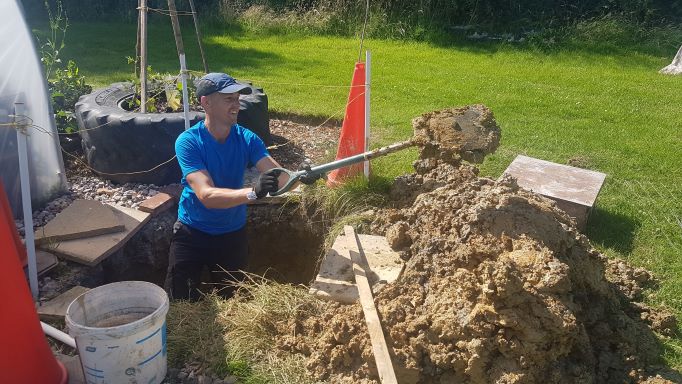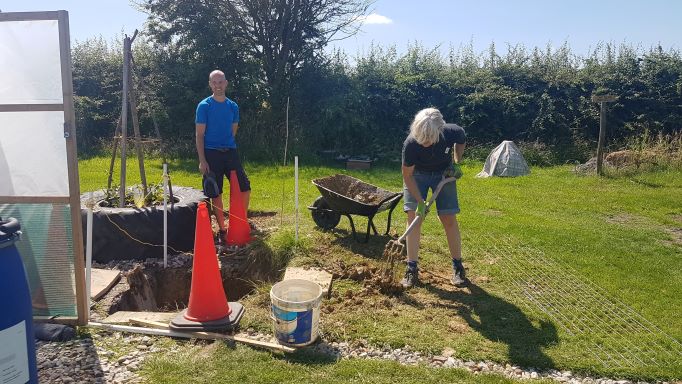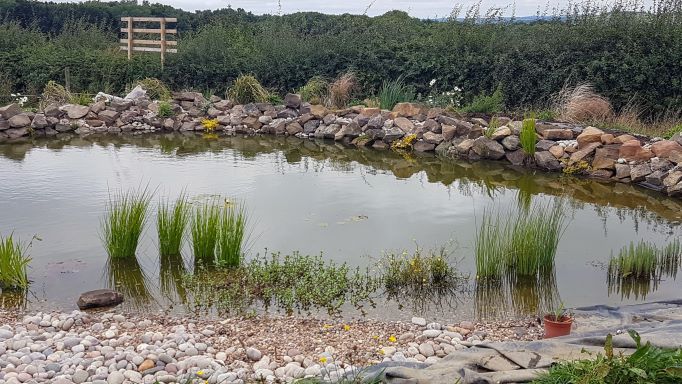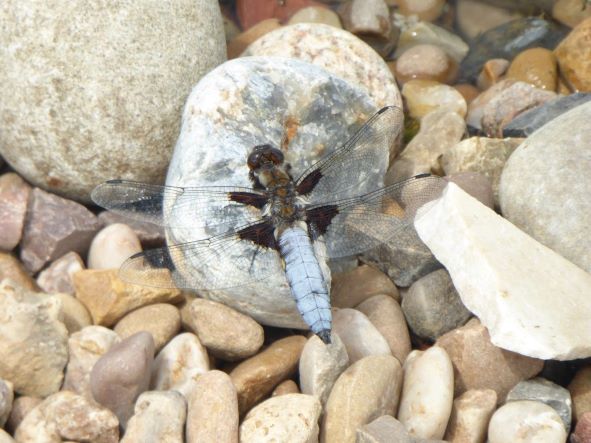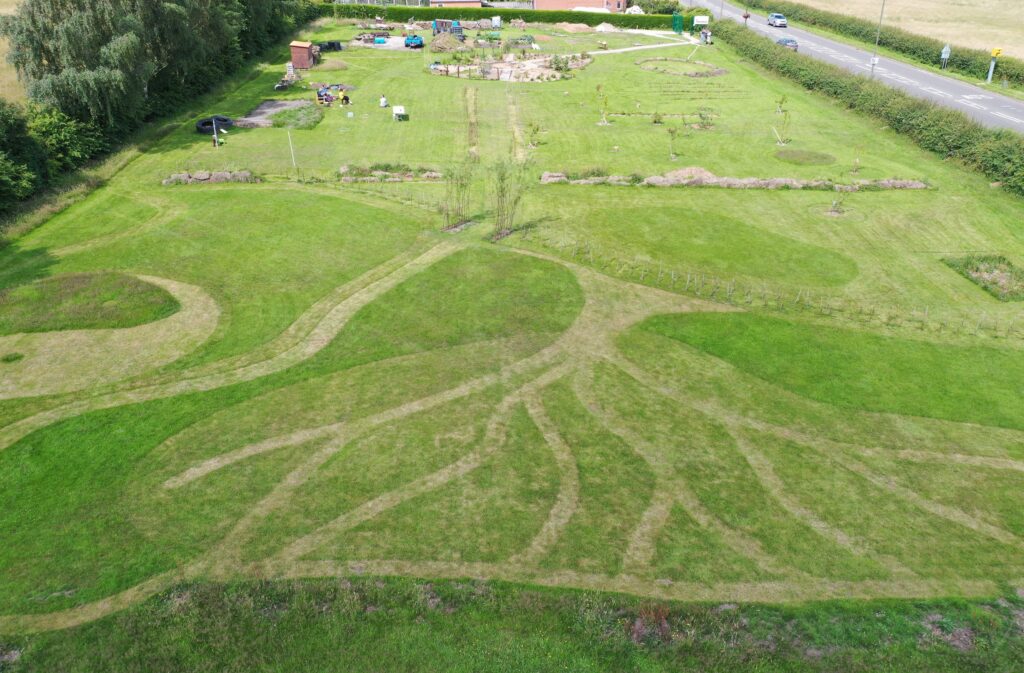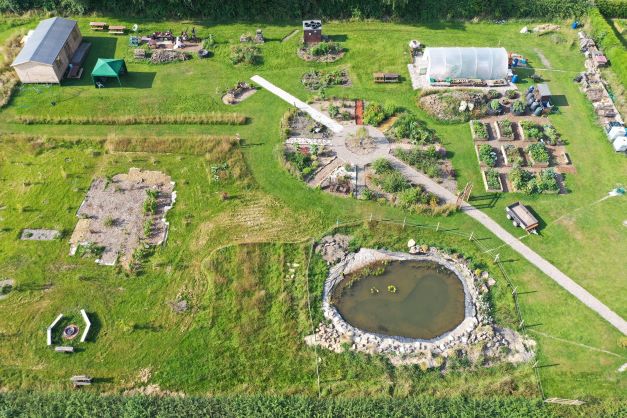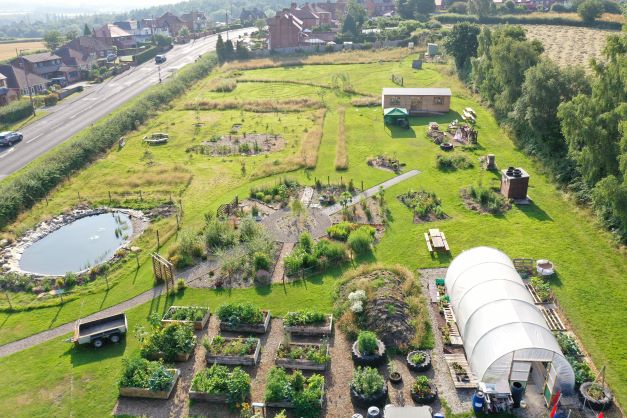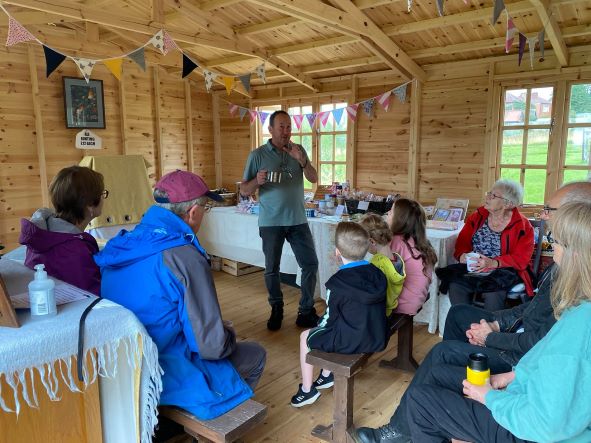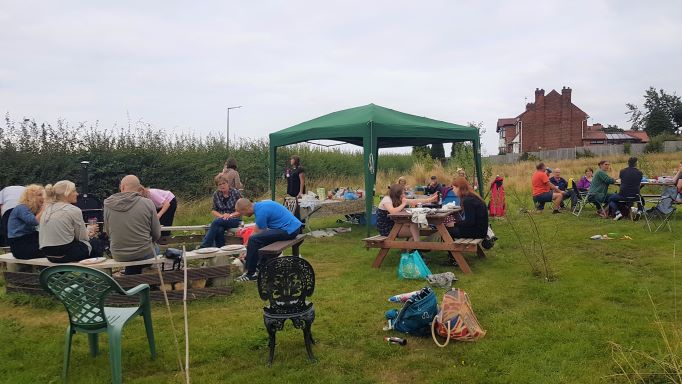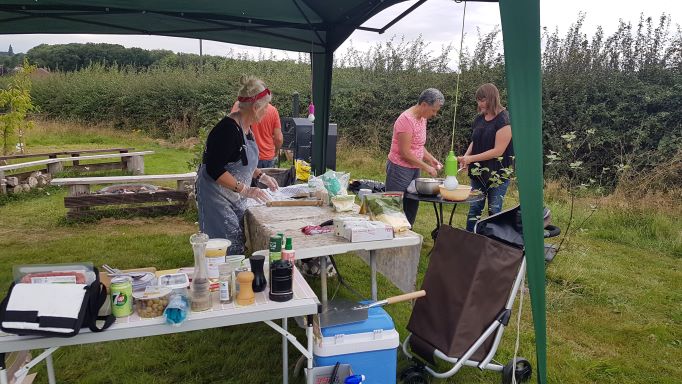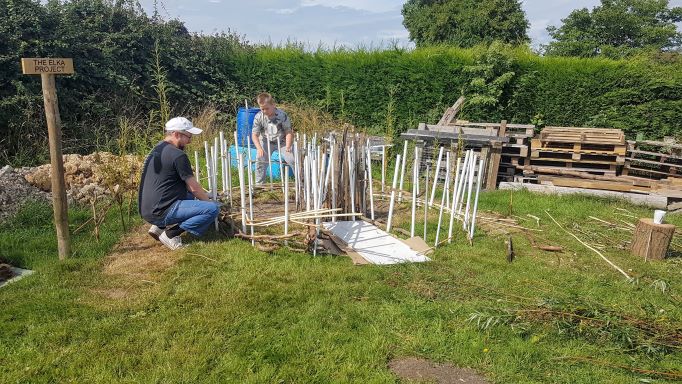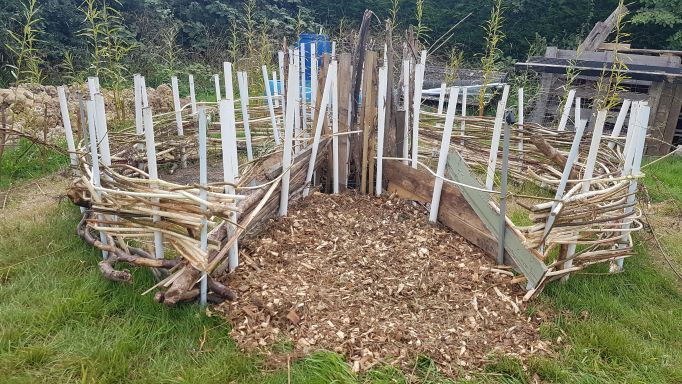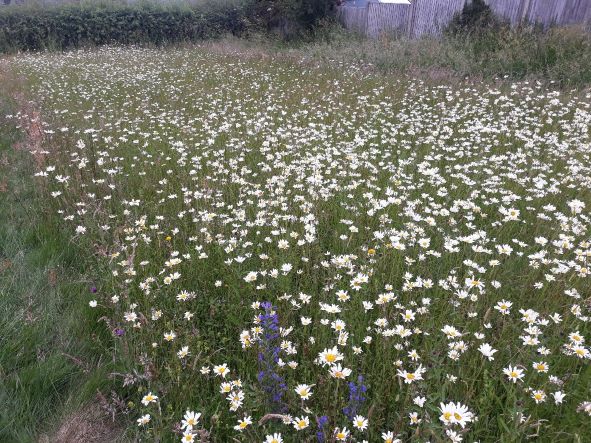Summer 2021 at Shipley Woodside Community Garden
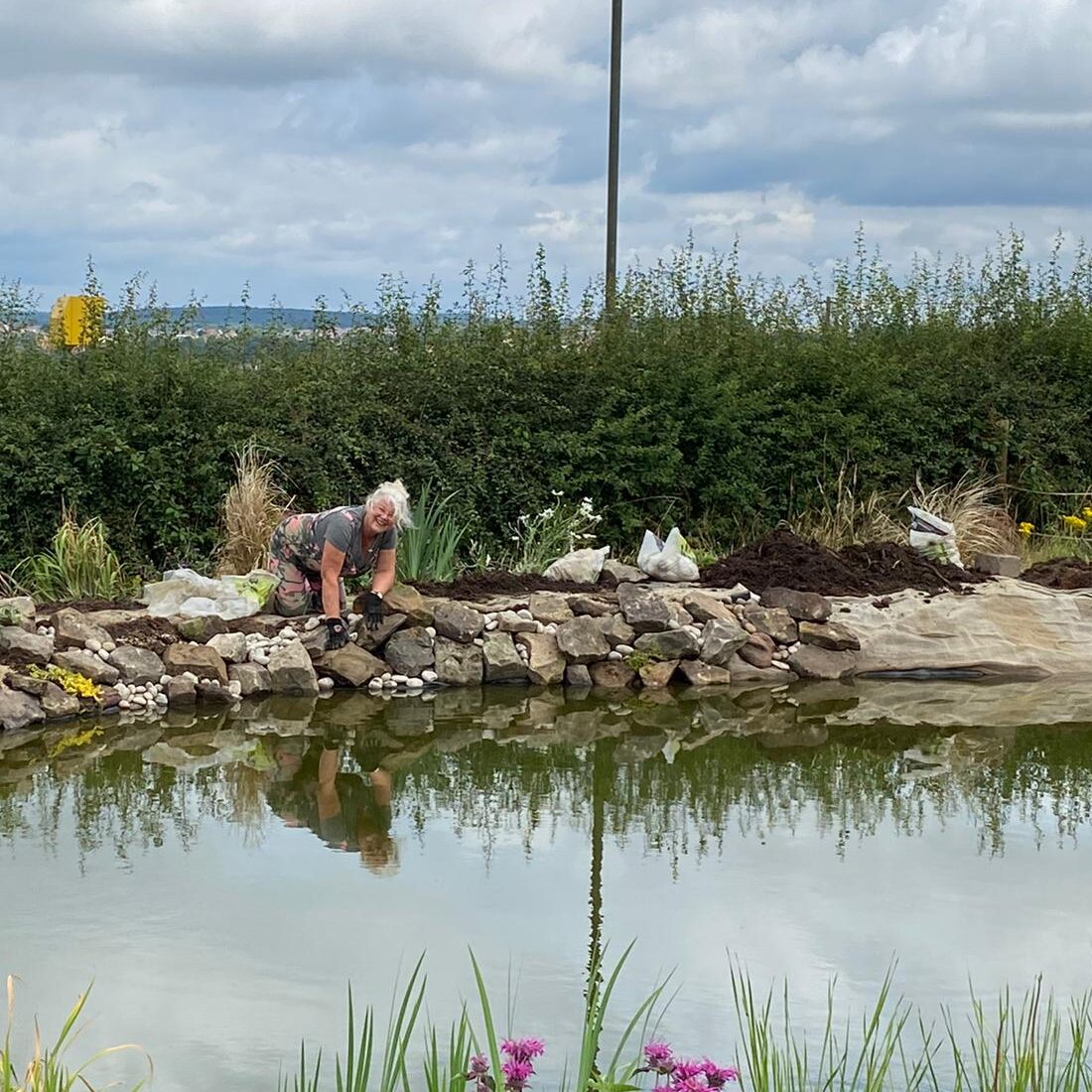
Our first attempt at a Cut Flower Bed. All the plants were grown from seed by our volunteers. We were a bit late in the season to decide to do this bed but the results have still been great and seeing all that colour and beautiful flowers can’t help but put a smile on your face. Volunteers have been able to enjoy making up their own bouquets and visitors for a small donation.
Water is a valuable resource and we continue to work on being as sustainable as possible by collecting and storing as much water as we can. Volunteers have been busy fitting guttering to Shedquarters which leads to an IBC ,ultimately there will be a series of these to collect a larger volume of water.
A large hole has been dug for an IBC to sit in the ground near the Polytunnel. Drainage was put in place at the side of the Polyunnel and this IBC will be able to collect rainwater from the cover. So we now have a dedicated IBC for the Polytunnel. No water will go to waste in this garden!
Lots of free rocks have been sourced to form the edge of the Wildlife Pond. Over time many more marginal plants will be added and the back of the bank planted with taller plants, which will create a densely planted, undisturbed area for wildlife, whilst also providing some privacy from the road.
We have been amazed at the wildlife the Pond has already attracted just with a few very young plants, but with the wider habitat around the Pond, it has been teeming with Damselflies, Dragonflies, Water Soldiers, Beetles plus much more and we even had a visiting Goose who seemed quite happy resting there all day!
Last Summer, Bridgford Drone Photography volunteered their time and expertise and took some footage of the Garden for us. One year on they returned and the changes are just incredible. Last year we were blown away by the images and how much had been achieved and this year even more so.
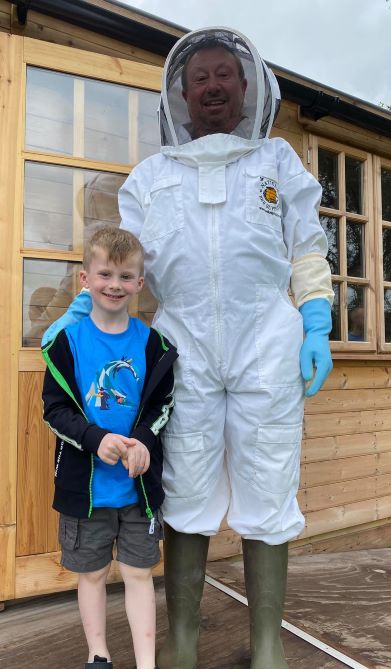
We now have our new colony of Honey Bees established, they are super calm and are doing exactly what they should be!
Our Beekeeper Keith Stevenson will periodically be giving talks on Beekeeping, with the next one coming up on the 18th September. You can find out more here if you are interested in coming along.
There is something about Honey Bees that just get to you, they really are fascinating creatures and his talks always prove very popular.
We had a brilliant social night for the volunteers making pizzas in the pizza ovens with some produce grown in the Garden. We are looking forward to many more of these socials!
Volunteers led by Tim Bennett of the Elka Project have started work on a Keyhole Compost Bed. This is a round raised bed with a pie-slice cutout for access to a composting basket in the center. The bed is filled with rocks, garden waste, decomposable plant material, and a thick layer of soil/compost on the top for planting. The center basket collects kitchen waste and other biodegradables. Watering into the basket disperses moisture and nutrients throughout the keyhole. These were originally designed for growing food in Southern Africa where droughts and poor soil conditions challenge farmers. This is because of its easy to reach design and it produces amazes results, allowing gardeners to build soil nutrition and reduce watering.
We harvested some Willow from the garden but were fortunate that a neighbour donated two large pots of established Willow which meant we had just enough to weave for the frame, which will ultimately be the wattle and daub walls. The next phase is to get very messy with the clay we are harvesting from the garden to finish the wattle and daub.
Jim Steele, Derbyshire Butterfly Conversation Officer updates on the progress of the Wildflower Meadow:
“The Wildflower Meadow has responded to treatment and there has been a significant step forward in its evolution this Summer. A sowing of supplemental, perennial, wildflower seeds last Autumn, and a good amount of Yellow or Hay Rattle, together with an additional, more modest extra amount in the Spring, seems to have done the trick and good variety of plants grew and flowered. These included Ox-eye Daisy, which usually dominates in the early years of a new meadow, as it did this year with the covering of white blooms in July, and Lesser Knapweed, Wild Carrot, Self-heal, and the various Fescue grasses. It is hoped the Yellow Rattle will ‘do its job’ and semi-parasitise the roots of adjacent grasses in an effort to control their vigour, allowing a more diverse range of wild plants to flourish within the meadow; the Rattle was patchy but took fairly well, and it has gone to seed which is hopefully good news for next year as the plant is an annual.
An increasing number of invertebrates have enjoyed the new habitat, including good numbers of Soldier Beetles, whilst I spotted at least four varieties of Bumble Bee and the Honey Bees from the adjacent hives have been helping themselves to the very local source of pollen and nectar! Butterflies have been a little scarce this Summer, but of note have been Ringlet, Meadow Brown, Gatekeeper, Large and Small Skipper, Large, Small and Green-veined White, Peacock, Small Tortoiseshell and my favourite, the diminutive Small Copper, all of which have been seen feeding from the meadow’s floral blooms.
The meadow needs to be cut before long and the cuttings or risings removed after the seeds and ‘creepy crawlies’ have settled, with the cuttings piled up off the meadow – such a grass pile is a valuable habitat in itself, sometimes even for the Grass Snake, a species that is present in the area. This cutting and rising removal is important in that gradually removes some of the nutrients absorbed from the soil by the growing plants, giving an opportunity for a broader range or variety of meadow plants to establish themselves, rather than the sward becoming dominated by the faster-growing, more robust species that are able to take advantage of a nutrient-rich soil – complementing the intended effect of the Yellow Rattle.
It can take some years for a wildflower meadow to become fully established and stable, and you don’t always get quite what you planned – we await next year’s growth with interest!”
And last but not least we say a special thanks to Derby Lodge Tea Rooms in Shipley Park for the their continued support and recent generous donation of a recycled plastic picnic bench.
There is plenty of work to be done in the Garden over the next couple of months and new volunteers are always welcomed. No need to commit to volunteering every week, just as and when you want to!

